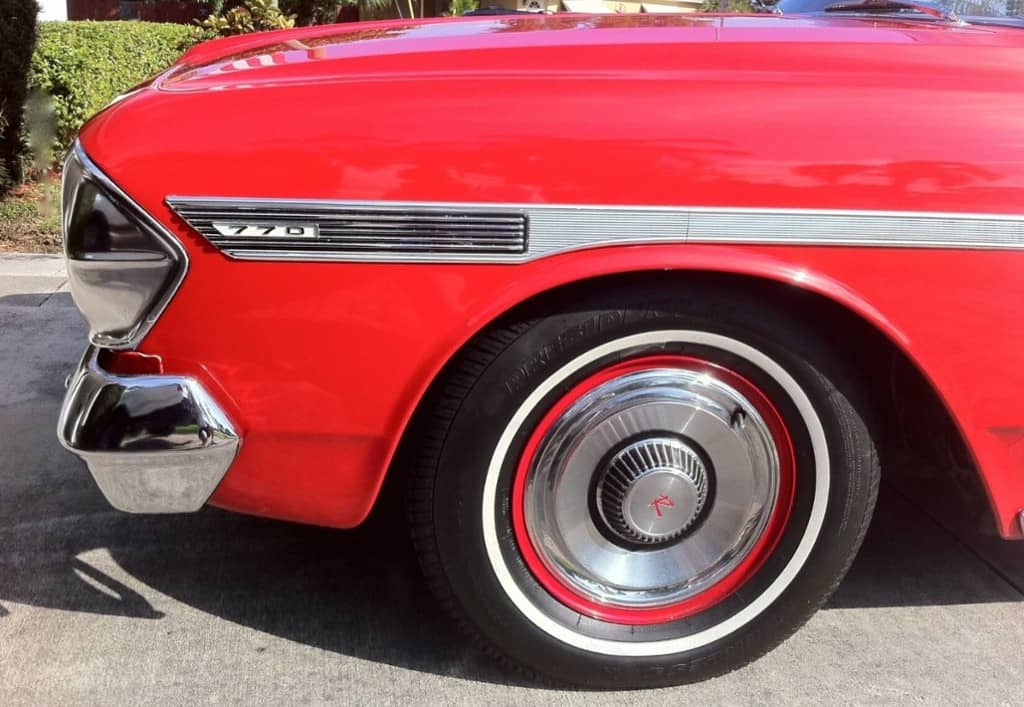
Today, just about every vehicle on the road is equipped with black tires, though you’ll find some performance cars fitted with orange- or red-stripe tires, sometimes even white-stripe tires. Interestingly, blackwall tires haven’t always been the norm. Invented in 1914, whitewall tires featured a white sidewall with black treads. Natural rubber and zinc oxide produced the white color and good wear characteristics, but it was the addition of carbon black that drastically improved tread life. Because blackwall tires were easier to keep clean and more expensive – more carbon black - any decade before the 1970s, and only luxury cars were fitted with blackwall tires. Eventually, the whitewall would be reduced to thinner and thinner white stripes, to be eliminated altogether by the late 1970s. Still, anyone looking for a classic look or restoring a classic car should find a set of whitewall tires. Unfortunately, whitewall tires aren’t the easiest to find, because not too many companies make them. Thankfully, though, because of the resurgence of demand, mostly driven by the increasing classic car restoration hobby, whitewall tires are being produced in greater numbers and in more styles.
 mostly replacing bias-ply tires in the 1970s, about the same time whitewall tires phased out of popularity. Radial tires last longer, ride softer, and deliver better fuel economy.
Old or New Tread – Modern tread designs are the result of thousands of hours of computational engineering, to reduce noise and abnormal wear while increasing traction and handling. Older tread designs were the result of best-guess and trial-and-error.
Modern whitewall tires are available in either radial-ply or bias-ply, with new or old tread designs. For the most authentic look and ride, choose old-tread bias-ply whitewall tires. For better ride, performance, and tire life, choose new-tread radial-ply whitewall tires. Also, never mix bias-ply and radial-ply tires on the same vehicle. When in doubt, buy a whole set.
mostly replacing bias-ply tires in the 1970s, about the same time whitewall tires phased out of popularity. Radial tires last longer, ride softer, and deliver better fuel economy.
Old or New Tread – Modern tread designs are the result of thousands of hours of computational engineering, to reduce noise and abnormal wear while increasing traction and handling. Older tread designs were the result of best-guess and trial-and-error.
Modern whitewall tires are available in either radial-ply or bias-ply, with new or old tread designs. For the most authentic look and ride, choose old-tread bias-ply whitewall tires. For better ride, performance, and tire life, choose new-tread radial-ply whitewall tires. Also, never mix bias-ply and radial-ply tires on the same vehicle. When in doubt, buy a whole set.